The Best 8 Books for Home Studio Recording
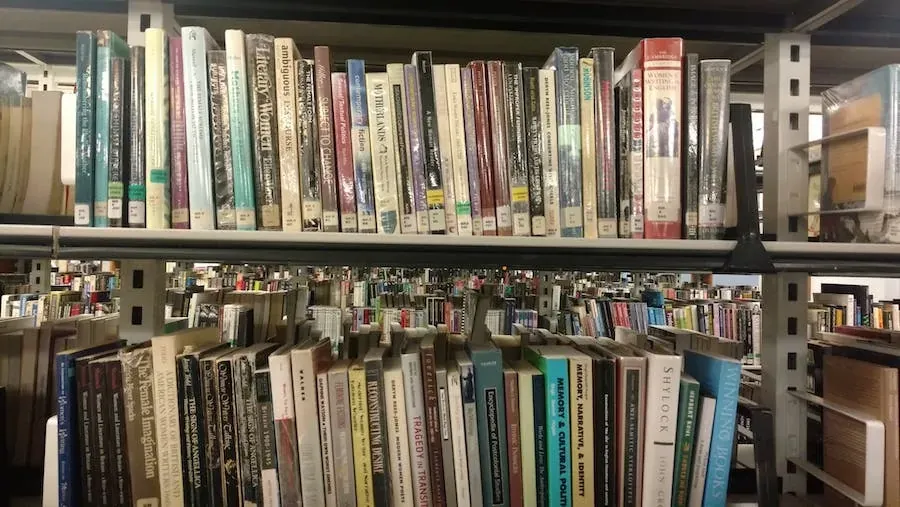
So, you want to learn more about recording and producing in a home studio? You’ve spent hours and hours watching countless YouTube videos and each one says something vaguely similar to the next; all the information is starting to blur at this point. How about turning to books now?
So much valuable information that can’t be learned from free videos on the internet is hidden in books, whether it’s guides for beginners or studies on advanced recording techniques and formulas to use. Here are the best eight books for home studio recording.
1. Home Recording Studio: Build It Like the Pros by Rod Gervais
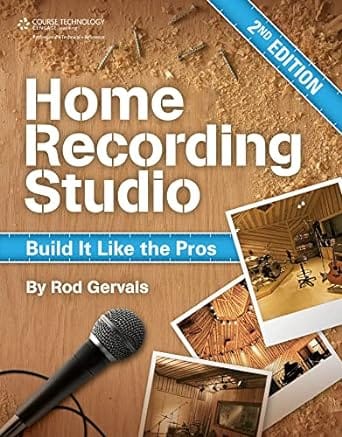
Home Recording Studio: Build It Like the Pros is one of the best out there if you’re looking to start from scratch and really get to know and understand all the ins and outs of building a recording studio at home. It details everything from proper room selection, how to set up a room for recording, how to set things up from an electrical perspective, how to save money while building your studio. Not only that, but this book essentially helps you to understand how a room works hand in hand with sound and the effects that different facets of room structure can affect a finished studio and sound quality.
This book is very comprehensive and you can tell that Rod knows what he’s talking about. He doesn’t use a bunch of fancy language so it’s not too hard for the reader to figure out what he’s saying. Throughout the book, Rod provides disadvantages and advantages for various real-life situations that could occur while building a studio, and really focuses on room isolation and blocking out any outside noises. The book doesn’t go super in depth in regards to acoustic treatment so if you’re looking for something that’s really informational when it comes to acoustic treatment, you might want to look elsewhere, but it does offer a fair amount of information about it. This book would be especially good if you’re looking to build a studio in a noisy area.
You can find Rob's book with excellent reviews on Amazon.
2. Home Recording For Beginners by Geoffrey Francis
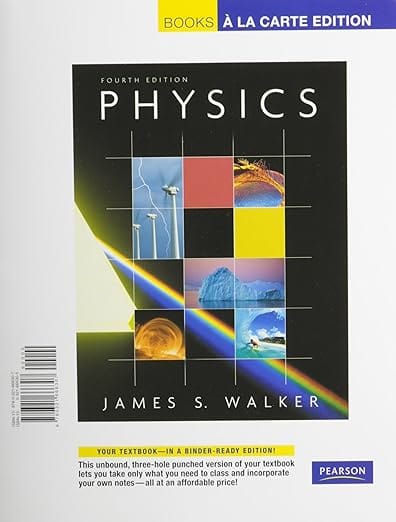
This is one of the better books on how to record and produce music in a home studio at a beginner level. If you’re just starting off and just want to focus on honing your recording skills so you can compose music quickly and efficiently and really learn your craft, Home Recording For Beginners is for you. It mainly revolves around using your computer as the main method for recording and composition. There are 30 lessons in the book with examples that you can follow on your own computer. The examples are displayed using Reaper, which is a low price DAW (although it allows you to keep using it for free without buying a license, even after the demo is up), but all the concepts can be applied to any recording software.
The author is very clear with his instructions and tells you what you should do exactly, rather than telling you things you should experiment or mess around with. If you’re the type of person who likes straightforward instruction and doesn’t want to do much experimentation while learning the basics, you’ll like that about this book. Geoffrey keeps thing simple and short, so once you get the hang of your DAW, everything should go smoothly. In a way, this book might be considered a guide to recording in Reaper, so if you’re a beginner who wants to get to know your own DAW rather than taking concepts you learn in Reaper and transferring them to other DAWs, this book might not be for you.
This book is a little more on the expensive side but is worth the money as it's extremely valuable for music producers, you can find it on Amazon.
3. Guerrilla Home Recording, Second Edition by Karl Coryat
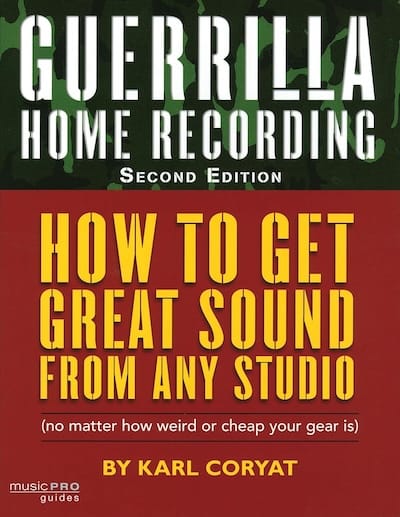
If you want to learn the ins and outs of digital recording without spending $10,000 on recording gear, this is for you. This book is pretty much about making do with what you have and taking the time to really get to know the fundamentals of recording and mixing music so that you can do it well, even if you don’t have top of the line equipment. The book focuses on digital recording but talks about analog recording as well. It also details how to humanize MIDI drum patterns, how to mix with plugins, and what to do when recording with different instruments.
In Guerrilla Home Recording, a lot of emphasis is put on just composing and recording music that speaks to you as an individual, rather than taking hours to analyze your work and nit-pick at it until it’s something that you think would be well received by listeners or people in the industry. Coryat throws in some clever tips on how to record things in ways that you might not expect from a “traditional” producer or engineer, and encourages the reader to experiment with different techniques. He also explains things in a lighthearted, casual, yet still informative way, so this book would be especially good for younger musicians and producers who want something to relate to.
Compared to the other books, this one is a little less expensive and can be found on Amazon as well.
4. Recording Secrets for the Small Studio (Sound On Sound Presents...) by Mike Senior
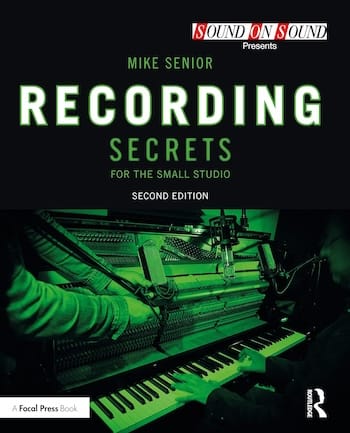
Looking for something more advanced? This is the book for you. It’s written assuming you know a bit about recording already, so it will likely be the best fit if you’re in the intermediate or advanced level of recording and producing. It’s not a guide on how to set up a studio, so make sure your studio is set up beforehand. This book is packed with tips and tricks from several professional audio engineers and producers from the industry that will help you to be confident in real-world recording situations, alongside the main content written by Mike Senior. It has everything from how to pick the right microphones and how to set them up, to how to record a session efficiently when you’re both the producer and engineer. Senior also provides a bunch of tips on what to do if you’re on a budget that’ll save you from jumping through hoops.
The content of Recording Secrets for the Small Studio is more intermediate to advanced, but explained in a way that is still easy to understand, and new information is introduced as needed. You’re not bombarded by a bunch of overwhelming new concepts at the beginning of each section, so there’s no need to keep track of different concepts since you’re given it bit by bit. Basic concepts that are well-known are looked at in different ways that you might not expect, and it’s done in a very tasteful way.
Mike's book can be found on Amazon.
5. Understanding Audio by Daniel M. Thompson
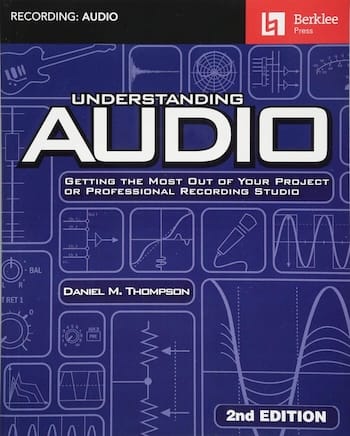
If you plan to do any recording, producing, engineering, etc, you need to read this book. It details the fundamentals of audio and room acoustics through every step of setting up gear, and explains the different chain reactions that one wave of sound can cause and how it translates through your gear depending on how you have it set up. At the end of each chapter, there are projects that you can do in your own home recording studio that directly involve the topics you learn in each chapter so that you can start implementing these fundamentals in your workflow right away. Aside from room acoustics, this book covers things like cables and wiring in the studio, signal flow, and digital and analog audio, among plenty of other topics.
Spread throughout Understanding Audio are various diagrams to help you understand different topics a little better; if you’re a visual learner this will be helpful. Since everything is explained very simply, and there are so many fundamental topics, this book would be good for beginners, but if you’re intermediate or advanced you could definitely learn some things from this book as well. This book has been a textbook for some required audio courses at Berklee, so it’s definitely a good one to pick up.
I was surprised to find how inexpensive this book was on Amazon.
6. The Singer-Songwriter's Guide to Recording in the Home Studio by Shane Adams
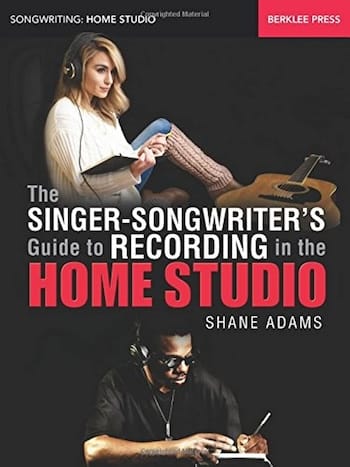
What if you’re not a producer? What if you have no intention of being an audio engineer? The Singer-Songwriter’s Guide to Recording in the Home Studio is for all you musicians and singers who want to record in your home studio but not get super deep into producing. This book helps you focus on getting a recording done in an efficient way that doesn’t have you scrambling to figure out what a DAW is and how to navigate it, so you can focus more on the creative side of things rather than the technology side of things.
Topics are interpreted in easy to follow sections, and all the equipment you need is listed and further explained. Things like microphones and DAWs are broken down into more detail to help you find the right fit for your needs. Also covered are virtual instruments and MIDI for those of you who want to get into digital music composition rather than composition with acoustic instruments. Mixing and mastering are briefly touched on, so you get the full experience of learning about production from start to finish, but it’s tailored more to the recording side of things. This guide would also be good for people who might not have the patience or attention span to sit and read about a lot of complicated techniques, or for those of you who get easily overwhelmed by a lot of new information or have a hard time remembering different concepts and how they work.
This book is mid priced and can be found on Amazon.
7. Master Handbook of Acoustics, Sixth Edition by F. Alton Everest and Ken C. Pohlman
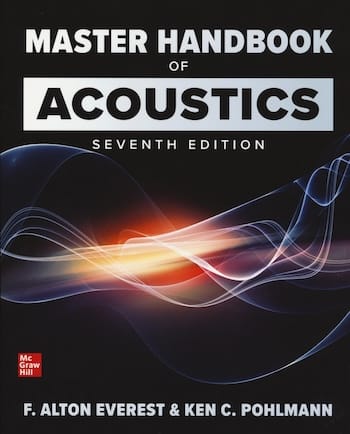
If you’re an audiophile, this is the ideal book. Although it has plenty of principles and concepts that would be good for anyone, The Master Handbook of Acoustics is more geared towards those who are extremely serious about understanding the science behind sound and room acoustics. If you’re starting out as a producer or audio engineer and want to eventually go from recording in your small home studio to mixing live audio in larger venues like concert halls and theaters, this book will help you as you level up. If you want to build your own home recording studio, theater, or control room, this book covers that.
The authors provide you with different formulas for calculating things like reverb times and explain how to measure rooms for ideal acoustic treatment. They also offer different room designs for your home recording studio or theater and give you suggestions on what construction materials to use for building a studio or home theater if you plan to start from scratch. Suggestions on how to reduce and get rid of noise problems are also given. This book is extremely science and math oriented, so if you struggle with those areas, it might not be a good fit for you. It covers all the bases, from simple fundamentals of acoustic treatment, all the way to the most advanced techniques that you might need to use. If you’re serious about audio and want a book that you can keep as you grow in your audio journey, this one is fantastic.
The sixth edition of this book can be found on Amazon for a reasonable price.
8. Home Recording for Musicians for Dummies by Jeff Strong
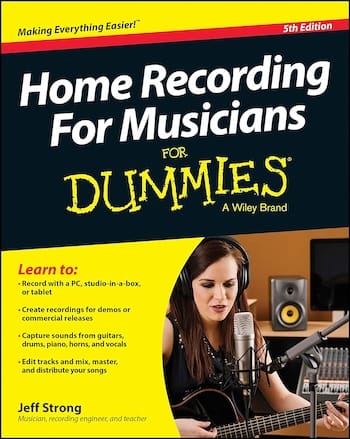
Home Recording for Musicians for Dummies is probably one of the most basic beginner books on home studio recording. It offers simple explanations while covering topics including but not limited to: choosing the right gear, setting up gear, recording, comping tracks, mixing, mastering, MIDI, and using effects plugins. It covers both the digital side of recording and the analog side, so whether you’re into recording with analog effects or using a computer, you’ll find the right balance of information to get you started with recording and keep you going until you need to level up to something more advanced.
There are also a few gems from the pros hidden in this book that more advanced producers can use. That being said, the majority of the information is basic so I don’t exactly suggest this for advanced producers. The only major issue with this book is that since technology has advanced so quickly, parts of it are a bit out of date in regards to using different DAWs and plugins. If you want something that is basic and easy to follow and you aren’t concerned about having the most up to date information, this book will work fine for you, but if you want something involving top of the line plugins, I suggest something newer. If you’re someone who has learned how to produce music specifically on analog equipment and struggle with technology, this book will get you into the world of digital recording in no time.
This book can also be found on Amazon.


